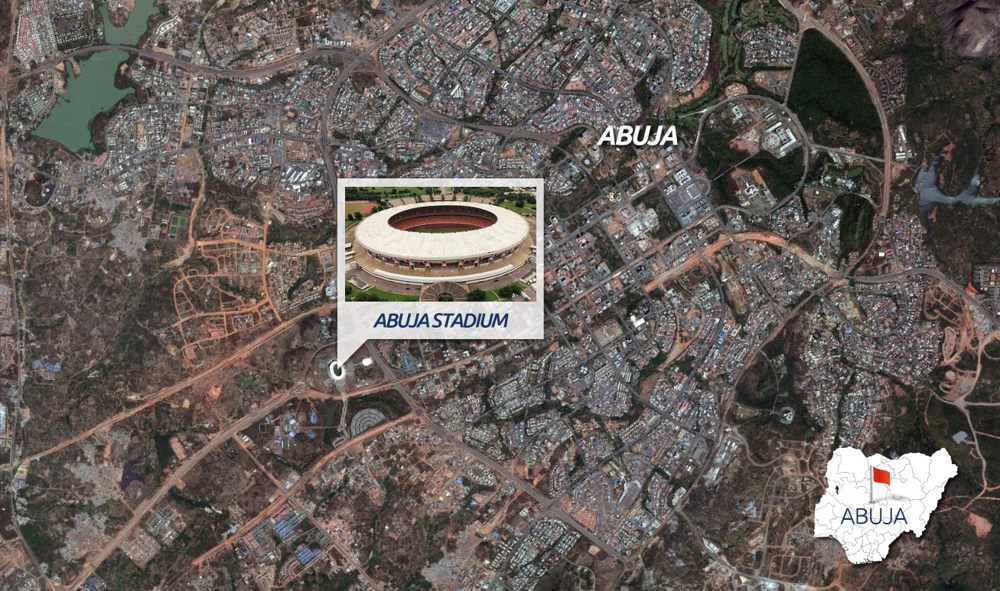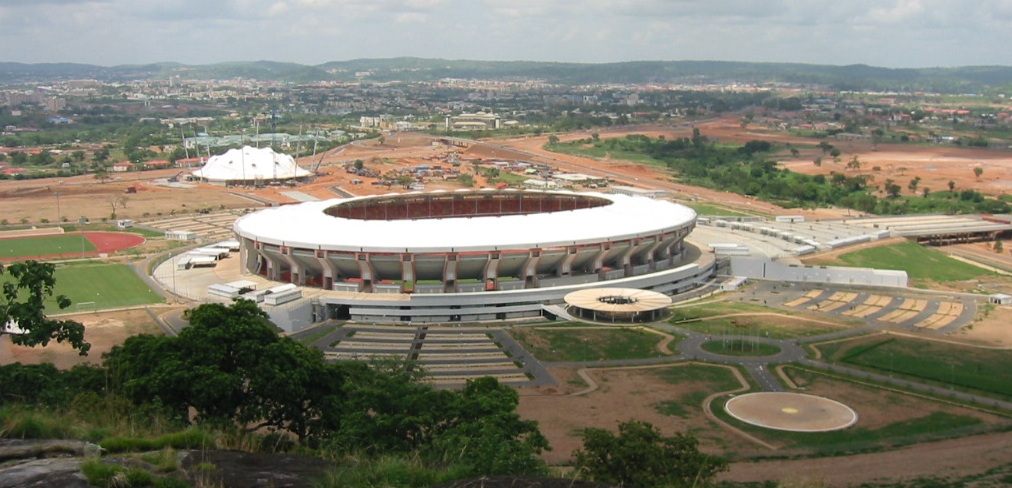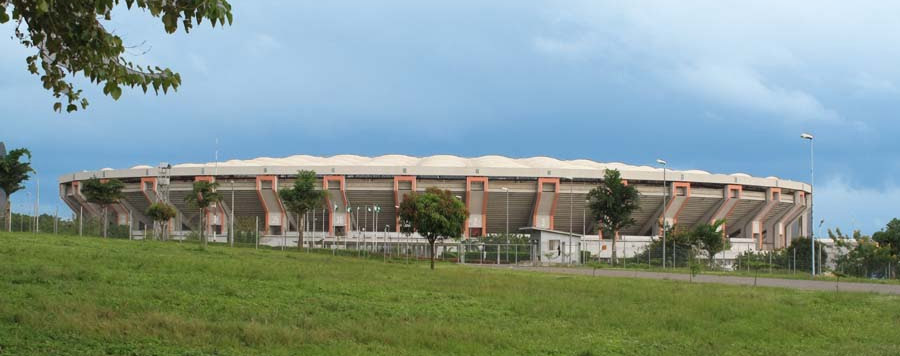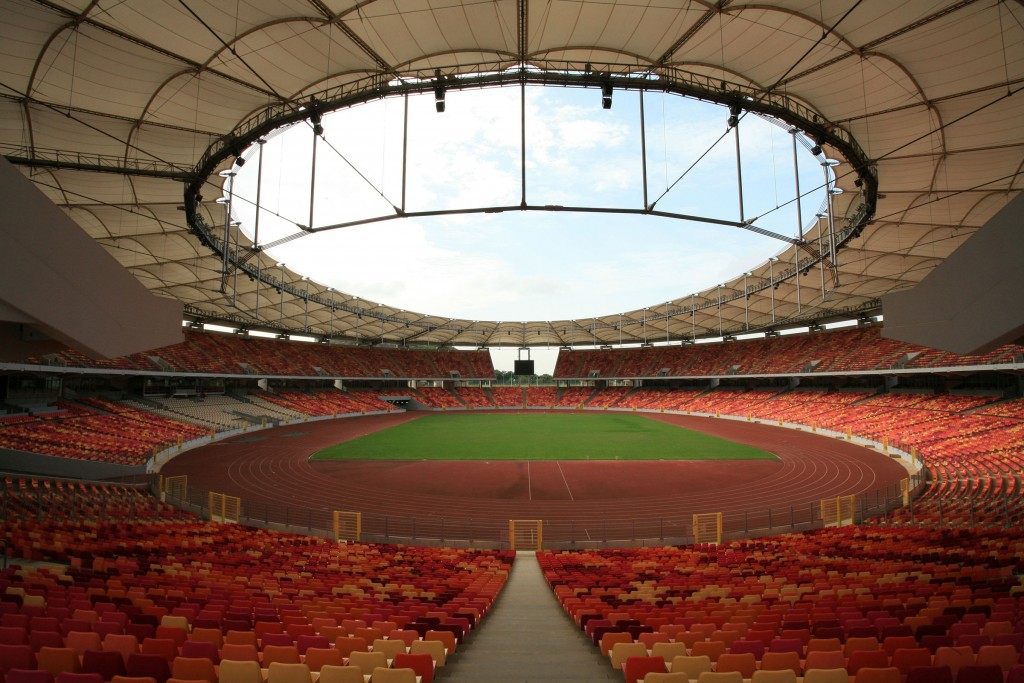New stadium: The costly gem of Abuja
source: StadiumDB.com; author: michał
 Stunning scale, appealing architecture and shocking lack of maintenance. Amazing stands ready for the best events, but also a tragedy in this stadium’s history. Meet the Abuja National Stadium!
Stunning scale, appealing architecture and shocking lack of maintenance. Amazing stands ready for the best events, but also a tragedy in this stadium’s history. Meet the Abuja National Stadium!
Advertisement
It’s high time we make up for this lack in the African part of our database! The new national stadium of Nigeria, commissioned in 2000 by the government, was built on 29 hectares in the west of Abuja.
Planned as the westernmost landmark of two central avenues of the capital, it stands on the opposite side to the national assembly building (easternmost). Fitted into a massive fork in the road, this stadium is a true landmark in the area. It’s connected by a set of pedestrian bridges to an even more spacious multi-use sports complex south, also providing it with vast parking sites.

When constructed, the stadium was among the largest, most modern and most expensive stadia in Africa. In fact, with 54 billion naira (some $360 million in 2003), the stadium was back then among the most expensive worldwide, earning it quite some criticism.

For the price Nigeria received indeed a very modern stadium able to hold just over 60,000 spectators on double-tiered stands. The multi-discipline stadium is topped by a lightweight PTFE membrane roof at the height of 40 meters. The cable-supported structure offers 33,000 m2 of shade-providing canopy and was, again, one of the best of its kind when built.

Though it was delivered primarily to host the 2003 African Games, the building was opened some time earlier by two Nigerian football clubs, Shooting Stars and Sunshine Stars. None of them have settled there as Nigerian football’s domestic needs are nowhere near that size. However the national team played numerous games here, even if rotating between other stadia nationwide.

While it also hosted many cultural and religious events, the stadium has become notorious for long periods of disuse and shocking lack of maintenance. With costs piling up to $7 million annually, the building is a major burden on the public budget. In 2012 it made international headlines as wild vegetation took over and required major clearing works.
Unfortunately the darkest page in its short history comes from 2014, when 19 people were killed during a poorly organised recruitment event.
Advertisement
 StadiumDB
StadiumDB